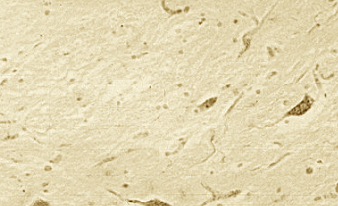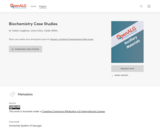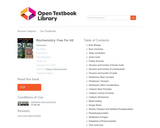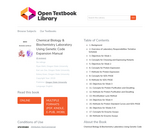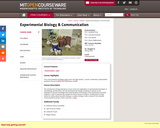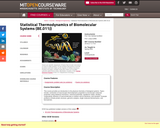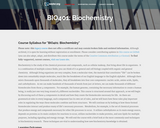
Biochemistry is the study of the chemical processes and compounds, such as cellular makeup, that bring about life in organisms. This course will look at how these formed biomolecules interact and produce many of life's necessary processes. Also it will look at the most commonly used techniques in biochemistry research. Upon successful completion of this course, students will be able to: recognize and describe the structure of the following basic biomolecules: nucleic acids, amino acids, lipids, carbohydrates; diagram how these basic biomolecules are used as building blocks for more complex biomolecules; differentiate between reactions that create biomolecules; describe how these biomolecules are used in specific cellular pathways and processes; analyze how feedback from one pathway influences other pathways; explain how energy is utilized by a cell; indicate how biomolecules and pathways are regulated; describe how enzymes play a key role in catalysis; assess which biochemical technique should be used to study a given biochemical problem. (Biology 401; See also: Chemistry 109)
- Subject:
- Biology
- Chemistry
- Natural Science
- Physical Science
- Material Type:
- Full Course
- Provider:
- The Saylor Foundation
- Date Added:
- 04/29/2019
